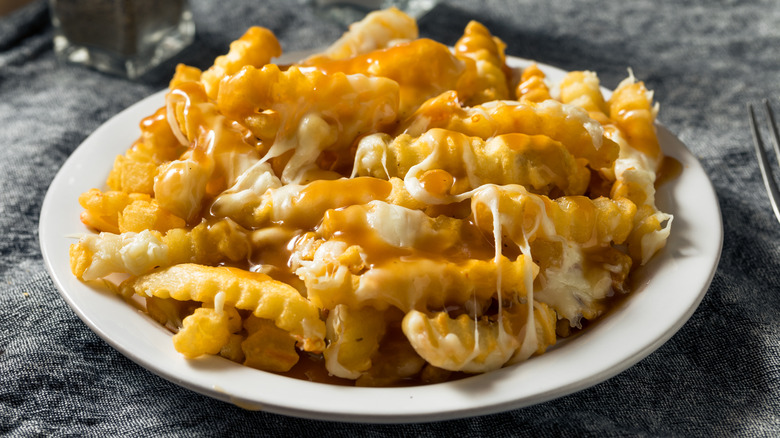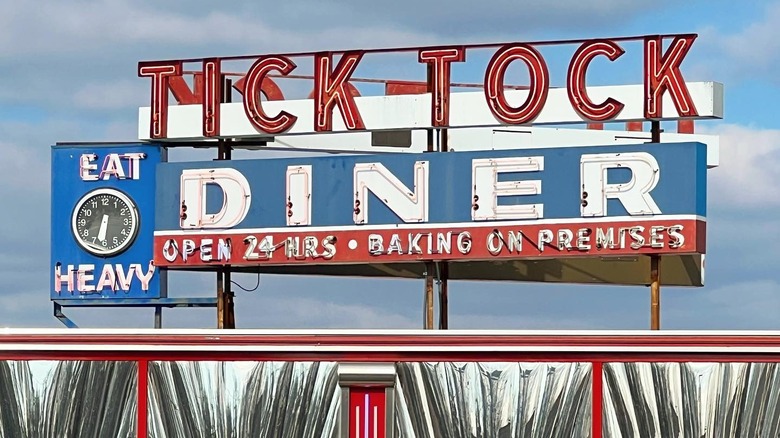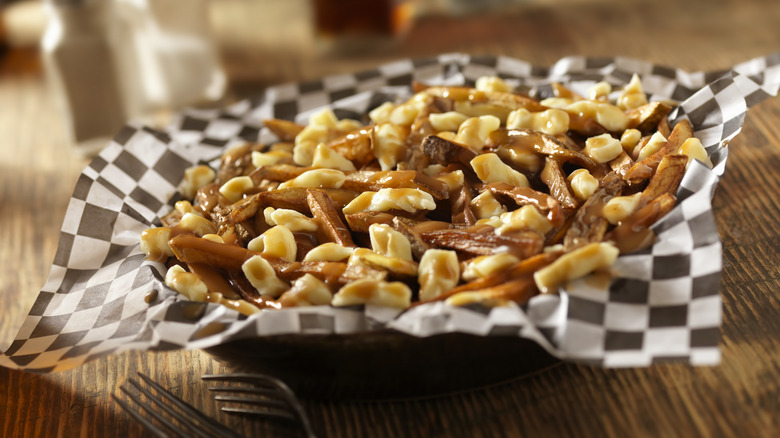What Are Disco Fries? The New Jersey Delicacy, Explained
The great American diner is a dying breed. Once upon a time, there was a rich crop of companies that manufactured these streamlined silver buildings, shipping them all around the country; but these businesses have all but died out now. Diners once served as communal spaces for people from many different backgrounds, from blue-collar workers to businessmen, seniors to students, and just about everyone in between. But since the 1990s, the nation's social classes have steadily drifted further apart, abandoning diners in favor of different restaurants that cater to specific niche markets.
One state, however, is keeping the diner tradition alive. New Jersey Monthly claims that its state has over 500 diners — the most in the nation. It's impossible to overstate how important diner culture is to Jerseyans. In fact, one Garden State native in particular, comedian Ramy Youssef, has likened New Jersey's diners to a religious experience. It's not just the setting that matters here. Diners are the heart of New Jersey's local cuisine, and the most notable dish of them all is disco fries, a heap of French fries covered in melted cheese and piping hot gravy. It's the perfect late-night snack and an edible memento of a bygone era.
The history of disco fries
Disco fries were invented at the Tick Tock Diner in Clifton, New Jersey, which is still in business today. It looks exactly like what you would picture if you thought of a classic diner — shiny silver with brilliant neon signage, one of which reads "Eat Heavy," which is pretty much the perfect slogan for disco fries. Like many traditional diners, the Tick Tock Diner is open 24-7, which was a critical factor in the rise of disco fries.
The Tick Tock Diner was founded in 1948. It's not exactly clear when the first version of disco fries appeared on the menu, but the dish's legacy was really established in the 1970s. Young crowds looking to fill up after a long night at the disco club would drop in and chow down on the indulgent dish, the perfect late-night munchie food. The name "disco fries" came from its link to the club scene, but as time wore on and disco died out, it became more of an anytime meal, often enjoyed by those craving a taste of youthful nostalgia.
Disco fries are traditionally made with crinkle-cut French fries and shredded mozzarella cheese. As more diners picked up on the dish, variations began to emerge, using different types of fries and cheese, with American cheese becoming a particularly popular choice. The one ingredient that always stays consistent is the ladle of brown gravy that ties the whole thing together.
Disco fries vs. poutine
You may have already clocked the fact that disco fries bear a strong resemblance to Canada's famous poutine. However, both cultures would surely argue that they are very different dishes, each group defending its local version with fervor. The similarities are pretty clear; both dishes are based on a heap of French fries with cheesy bits melted under the heat of brown gravy. The main difference is that poutine is made with cheese curds while disco fries use shredded cheese.
It appears that disco fries and poutine were invented around the same time, both popularized in the late decades of the 20th century. Both began as regional specialties, disco fries coming from New Jersey and poutine from Quebec. However, their histories are very different. While disco fries catered to a young clubbing crowd, poutine emerged from small farming towns.
New Jerseyans and Quebecois will each argue that their dish is superior, but outsiders will have to determine for themselves. Texture is really the key factor when it comes to preference, as poutine is known for the squeak of its curds, and the melty cheese on disco fries melds more with the gravy to make something that feels a bit like crispy mashed potatoes.


